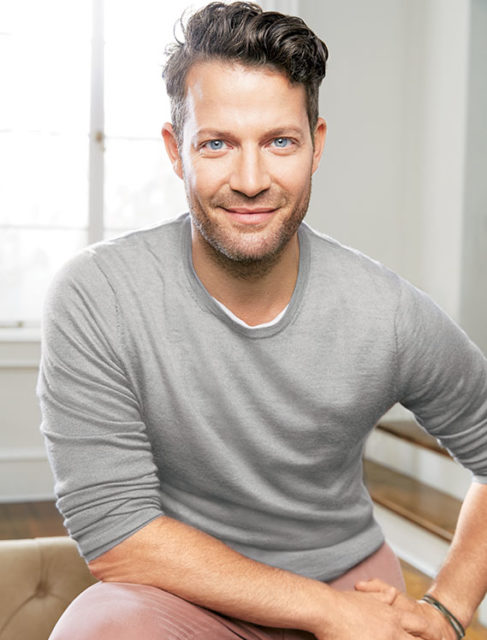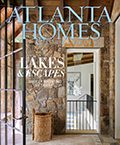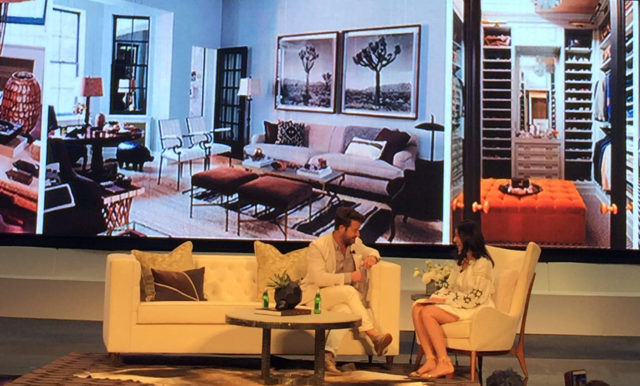A conversation with Nate Berkus
AH&L chats with the incomparable interior designer, who spoke at the first of a series of live keynote events at AmericasMart Atlanta’s July International Gift and Home Furnishings Market

Nate Berkus
Could you share your favorite design-related word, phrase or quote?
I get teased about this, but I always say “That’s a really cool moment” when I’m talking about a grouping of furniture and decoration. I’ll be like “that moment looks really nice.” My family and especially my brothers think it’s ridiculous that I use that kind of terminology, but it is very design-centric.
Who do you look up to in the design industry?
I look up to many people. My husband [Jeremiah Brent], who has no formal training in design but whose base-level aesthetic and level of taste and his vision [are] really interesting—which is a good thing because we do television and decorate our own homes together. But I think there’s been several people throughout the course of my career whose work I don’t try and emulate but I definitely am aware of. Muriel Brandolini in New York City being one of them; Suzanne Rheinstein in Los Angeles I think is incredibly talented; my friends Estee Stanley and Brigette Romanek in Los Angeles [of] Hancock Design, I think they do beautiful work. There’s so many. I’m of the school where it’s such a good community and there are enough projects to go around and there’s opportunity for everybody, so I’m fairly collaborative when it comes to being open about who I admire.
What can’t you live without in your tool kit?
A tape measure, for sure.
Describe your style.
I’ve always believed that homes and interiors should feel layered and assembled over time. I tend to reach for things that have a tremendous amount of patina. About 80 percent of what I use in any interior is antique or vintage, and the reason that I reach for those things before I reach for new pieces—not that I think there’s anything wrong with new pieces—is that I really think that, especially when you’re working with new construction, there’s an inherent character that comes from mixing the old with the new that is irreplaceable. That soul, that feeling that you get when you see something that’s a bit time-worn, that’s been there for 200 years—a gilded mirror that’s slightly chipping and dull from time—those are things that I’ve always been really drawn to.
What would your dream commission look like, and where would it be?
That’s a great question. I think it would probably be for me—and by me I mean my family of three—and I think it would be in Mexico. Some sort of oceanfront, very picturesque, beautiful, easy-living kind of home. I’ve never owned that or had the opportunity to really design that, and I think it would be fun to work with local materials and then also bring in some really interesting furniture and decorations from other countries.
What’s a design rule you like to break?
You know, I think I don’t really believe in rules per se. I don’t believe in trends, I don’t believe in rules. I think trends are designed to make people feel bad about what they didn’t buy last year, so I think our homes should be a little bit longer lasting than that. I think rules are also designed to intimidate people from doing really incredible original things in their space, and historically the best interiors, the ones that have been most inspiring to me, are where people did exactly what they felt in their heart they wanted to do and didn’t follow the rules. And all of a sudden those became acceptable in terms of the rules. So for me, I’m much more interested in how you create a space that’s deeply personal than I am in worrying about how the proportion of the coffee table should be exactly this, or whether or not you can mix two different periods or combine colors or patterns in a way. I think we’ve all been really inspired by the spaces where you can tell that somebody took a risk.
What’s something you love about Atlanta or the South in general?
There’s a lot that I love about Atlanta, but I love the food and I love the architecture here; I think it’s arguably like the best in the country. Give me a leafy street in Buckhead and looking at all those amazing architectural salvaged details and how people build here is beautiful. I’m a fan.
Quick-take: What we learned at Berkus’s keynote
* He goes for texture over color. A lover of neutrals, Berkus opts for patina and texture to add interest to a space and shift the focus to craftsmanship.
*He loves treasure-hunting. “I’m the kid who missed the school bus because there was a Garage sale,” says Berkus, who loves finding the perfect salvaged or antique piece for the home.
*…But he also knows how to edit. “When you’re not enjoying [your things] any longer, that’s when it’s time to edit,” he notes. “When you don’t know what you have anymore, edit.”
*He has a penchant for old architectural elements. Berkus notes the inherent, irreplaceable character of salvaged architecture and accessories. In new-builds, he advises bringing in antiques for a sense of history.







